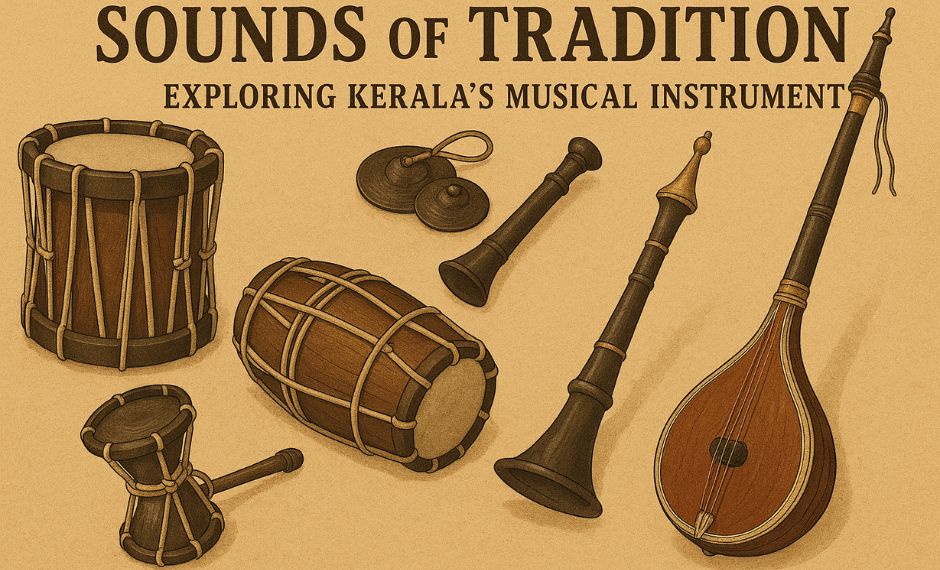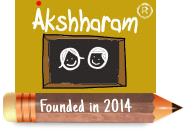Sounds of Tradition: Exploring Kerala’s Musical Instruments

Introduction
“To me, music is what connects human hearts. It’s something that takes you to unknown levels,” as Ilaiyaraaja once said. Music plays a vital role in transforming us, transporting us to different states of being. But nowadays, the younger generation is more socially withdrawn; they plug in their headphones and enjoy the vibe. This may not be considered a sin, but there was a time when harvest festivals were celebrated in front of the village temple or the town center. These gatherings, whether for announcements, new shop openings, or other ceremonies, reflected Kerala's rich cultural heritage.
Kerala also has many historically significant landmarks tied to beautiful musical experiences. The place is rich in customs, traditions, and cultural significance. Traditional instruments here are not just tools for music; they embody history, spirituality, and the spirit of the land. These celebrations brought people together, showcasing customs and creating a native magic that is fading today.
Music holds a special place in Kerala. The beats of the chenda hit differently compared to ordinary drums, and the notes of the veena carry a distinct rhythm when contrasted with the violin. Each instrument is unique and serves a specific purpose. If you watch old Malayalam movies, you might have noticed how the background scores often feature unique rhythms that evoke nostalgia for old Kerala.
This blog explores Kerala’s musical heritage through its iconic instruments.
Music in Kerala Tradition and Festivals
In Kerala, music is not just for entertainment; it is also an act of devotion. It is the soul of every festival, ritual, and daily life moment. The grand temple celebrations, Pooram, and festivals are incomplete without these musical elements. Melodies and rhythms bring people together in joy, devotion, and tradition.
Onam: Harvest festival filled with Onappattu and Pulikali, which is the famous tiger dance.
Vishukkani: Devotional songs and folk melodies which is believed to bring fortune and prosperity.
Thrissur Pooram: The grandest temple festival comes alive with the thunderous rhythms and exhilarating chaos of a hundred chendas and elathalams, their vibrations trembling through the air.
Theyyam: it is a native custom towards showcasing the devotion to god with sacred rituals, which is driven by certain themes and hypnotic drumming.
Boat races like Vallam Kali get energy from vanchipattu.
What Are The Famous Musical Instruments Representing The Kerala Tradition?
1. Chenda
A powerful cylindrical drum played with sticks. Proper training is required to play it. When played in groups, the effort and coordination create a blissful experience for both the eyes and ears. The players wear mundus in uniformity, which adds to the uniqueness of the performance. This instrument is a showstopper in most common cultural events and programs. The special feature of chenda is that it is so loud that the energy beats can be heard from miles away.
2. Maddalam
Are you someone who has experienced watching Kathakali, when the main protagonist is performing in the background, there will be a deep, resonant thumb sound of maddalam.
The Maddalam is a barrel-shaped drum traditionally crafted from the wood of the jackfruit tree. It has two playing heads and is suspended from the waist of the player. Both sides are struck using a leather strap or a special drumstick, producing a deep, resonant sound. The Maddalam plays a crucial role in classical art forms like Kathakali and Koodiyattam, where its rhythmic patterns enhance dramatic expressions. Its unique tonal quality blends seamlessly with traditional Kerala performances such as Nadakam (folk drama) and Bale (a ritualistic dance-drama).
In Koodiyattam and Nadakam (traditional dramas), the maddalam plays a crucial role as a mood-setter, scenes such as heightening tension, mimicking footsteps, or even imitating the flutter of a bird’s wings. This instrument doesn’t just keep rhythm; it breathes emotion into the performance. Rather than a musical instrument, it helps create an earthy divinity in the cultural art form, blending passion with tradition.
3. Edakka
The edakka is an hourglass-shaped drum, similar in design to some children's toys. Unlike the powerful chenda, it produces soft, rhythmic notes and is traditionally played during temple rituals.
Its gentle sound makes it distinct among Kerala's percussion instruments. The edakka is slung over the left shoulder, and the right side of the instrument is gently beaten with a thin curved-ended stick.
There is a fun fact behind the design of edakka, a spinning toy that resembles a child’s spinning toy. Nowadays, the edakka has been redesigned in a more modern style, making it far more convenient to use. But purists still swear by the warm, organic tones of traditional craftsmanship.
4. Thimila
In earlier times, the Thimila was crafted entirely from wood. Today, modern variations are available in markets. This instrument plays a key role in temple rituals; they are unsung hero of the temple orchestra. This instrument is suspended from the neck like the maddalam or chenda. As part of the Panchavadyam ensemble, the Thimila serves as an essential member of Kerala's traditional temple orchestra.
Thimila is the pulse Panchavadyam where the role of the instrument remains sacred in the festivals, rituals, and Kerala’s legacy.
5. Elathalam
The elathalam, a miniature set of bronze cymbals, originates from Kerala and Tamil Nadu. They produce different sounds based on the playing technique and are traditionally used in ensembles like Panchavadyam, Nadakam, and temple orchestras. Players hold one cymbal in each hand and strike them together. Most of the time, the elathalam is not the main instrument, but it complements the group's performance.
Endnote
A closer look at Kerala’s musical history and legacy reveals the deep cultural impact of God’s Own Country. Introducing your little ones to these musical traditions helps them connect with the pulse of Kerala and understand its unique rhythms. Akshharam, Malayalam language reading class online, wishes you to get into the rhythm of Kerala music.
We invite you to explore the vibrant world of Kerala’s music. Come, immerse yourself in its rhythm, and we also welcome you to Akshharam to Malayalam classes for kids! Connect with us to know more about the platform.
